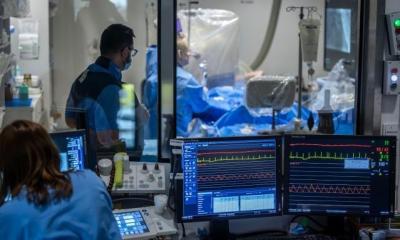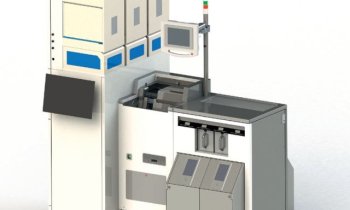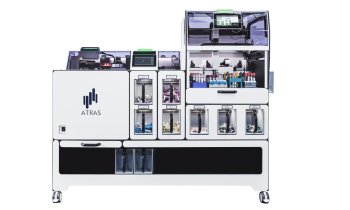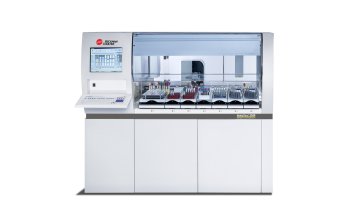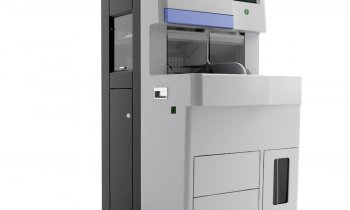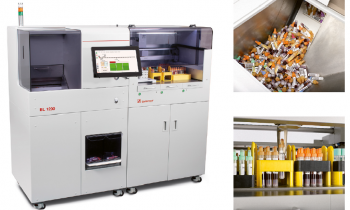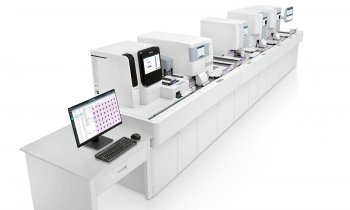A case of the tortoise and the hare
If you were lucky – or unlucky – enough to have visited a medical central lab 20, 30 or even 40 years ago and know how such a facility looks today, you will probably think you are in some kind of time warp.

Indeed, not a few but many of generations have passed. Automation of medical procedures, particularly in diagnostics, has seen lightning progressed.
Today many systems, inconceivable a few years back, are already in their third generation. For example, in the 1970s a haematology system was the size of a closet and equipped with a separate console. An experienced pathologist would question well over ten percent of the system’s results, take the specimen and examine it under his good old microscope to verify the machine data. Today, the same system is a small unit, frequently integrated into a line of automation and the rate of unquestionable results is above 96, 97 or 98 percent.
Until a few years ago, entire battalions of staff had to perform a multitude of steps manually, from the pre-analytic through the analytic (measurement) and the post-analytic stages. In the process they also ran the risk of being inundated by thousands of data, printed on miles of fanfold paper – simply too much to handle. Today? One, sometimes two, lab technicians control their modern, fully-automated lab ship from a bridge, now and then descending into the engine room to load another tray of specimens, discs or rings.
Not only haematology was revolutionised by automation, the same holds true for clinical chemistry and many other central lab functions with photometers and huge clinical-chemical analysers now illustrating the third generation automation.
By comparison, a pathology department appears to be almost archaic. Automation has been slow to take hold. Why is that? Are staff members less automation-prone or less automation-capable? Most certainly no. 30 years ago, for example, a lab technician would manually place a slide to be stained on a rack in the slide staining system. Before that he had to ‘programme’ the slide, and punch – much like a tram conductor would punch a ticket – an aluminium disk. Admittedly, the machine looked rather clumsy but it was able to process up to 24 trays and could be connected to the water supply.
Not very different from a modern slide staining system, but which is smaller, looks smarter than its predecessors and is programmed digitally rather than punched manually. Even today, however, the slides or racks must be fastened manually. Many other routine steps in a pathology department are still done largely by hand, such as paraffin embedding, removal and sectioning. Sections of only a few microns are cut by the microtome or cryomicrotome.
Automation in pathology is much more difficult to realise, not only due to the many individual steps, but also because pathologists work with a wide variety of materials, from tiny biopsy specimens to entire extremities. In the 1960s, a chair at the University of Tübingen was dedicated to optimise microtome blades, which cut sections as thin as 2 to 5 µm.
A British company even developed – and built – a device to sharpen the microtome blades right in the lab, to avoid the time-consuming and expensive procedure of having to send the blades to specialised services. The device was called a microtome sharpening machine but it was far from what we today would consider ‘automation’ since it required a highly skilled and experienced operator, as well as time and patience: a single sharpening operation could take hours. Disposable microtome blades had not yet been invented, at least not for routine use – another reason why automation in pathology was much slower than in the clinical lab.
Obviously automation did not entirely bypass pathology. Particularly in recent years that improvement has made major and successful inroads. At congresses, and in the relevant literature, the topic automation has become a fixture covering everything from the integration of different steps to partial and full automation and from order entry systems to full integration into the existing lab information system or, ideally, the hospital information system (HIS).
It will be exciting to see pathology catch up, in terms of automation, in the years to come!
Profile:
As of this issue Walter Depner every so often will be sharing his thoughts and ideas on trends in lab and pathology diagnostics. Before going into consulting he has held positions in several international lab companies; moreover as editor he has been extensively covering lab technology, lab medicine and microbiology for many years.
04.09.2014





